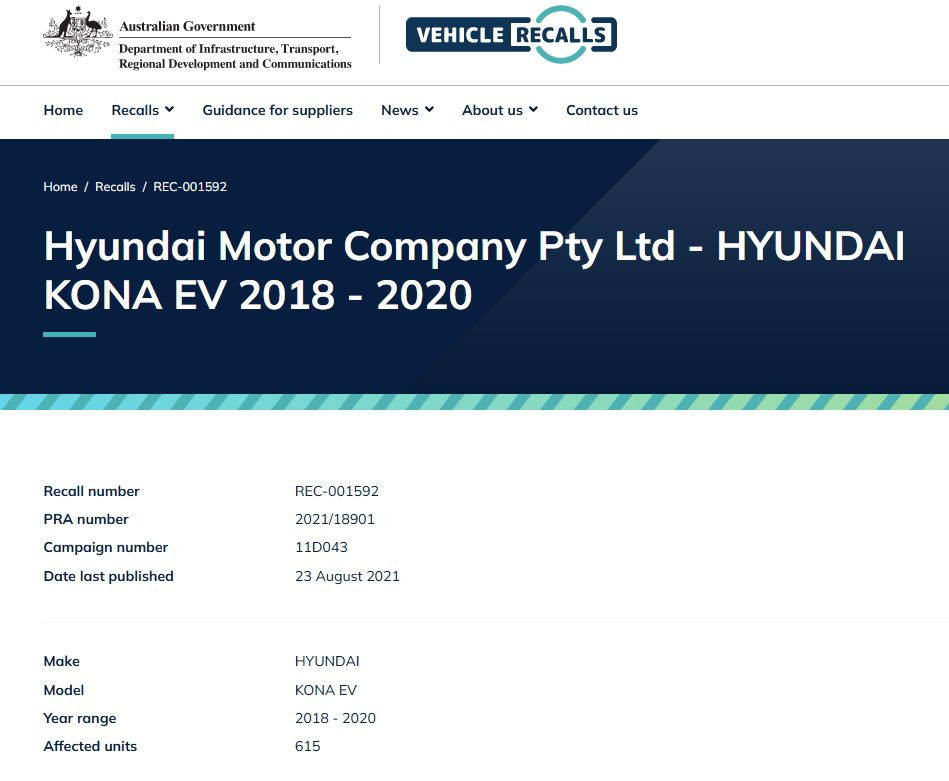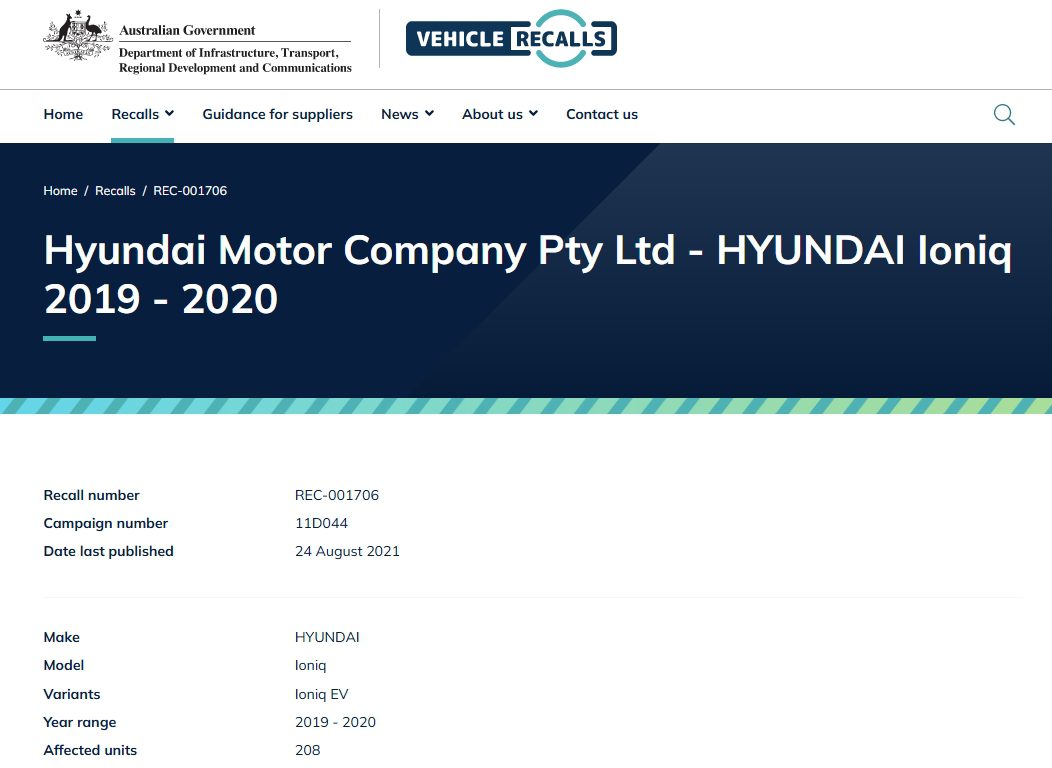Hyundai Australia has listed 615 Hyundai Konas and 208 Ioniqs on the official Australian government vehicle recalls website following the information notices sent to owners of affected electric vehicles back in March this year.
Hyundai has also sent a follow-up email to their March information bulletin, calling on owners of affected vehicles to urgently book their cars in for the needed work.
The fault has been reported by Hyundai to have been caused by incorrectly folded battery cell anode (negative) tabs which may contact the cathode (positive) terminals, potentially causing short circuits and fires. It is believed that only batteries manufactured at an LG Chem battery plant in Nanjing (China) are involved.
Reports suggest that the replacement packs will be built with insulating coatings on the cathodes in order to prevent any possible short circuits.
Worldwide, the recall covers approximately 77,000 Konas, 5,700 Ioniqs and a small number of Elec City buses.
The total cost for the recall is expected to be nearly $A1.4 billion, 70% of which will be covered by LG. Whilst the recall program began overseas in early May, it has been rolling out only as fast as the replacement part become available. As a result, it is only now that Australian vehicles have joined the queue.
As to what work will be done – the vehiclerecalls.gov.au website states “Affected consumers will be contacted by Hyundai to arrange a battery replacement”. This was also the remedy stated in Hyundai’s March email.
A previous notice from Hyundai used the somewhat less definitive language of “Hyundai will inspect, update software or replace the high voltage battery if found to be faulty”.
Hyundai this week confirmed to The Driven that “possible” replacement is accurate, but that the vast majority of the vehicles will receive a replacement battery. The process will involve an initial software check/update to determine the actions to be taken.
On the Kona recall, Hyundai confirmed that of the 615 Kona EVs involved, 511 will definitely need the battery replaced with the other 105 determined on a case-by-case basis after running the software check/update.
It is worth noting that if your Ioniq or Kona falls outside these dates, your vehicle is not affected by the recall – and in fact may have been made in a different factory altogether that opened after March 2020.
However, if you wish to be certain, visit the Australian government vehicle recall website for you vehicle model, as listed below. Under the heading ‘Identifying features’ you can download a spreadsheet of affected VINs (Vehicle Identification Numbers) to check yours against.
For the Kona, click here
For the Ioniq, click here
Remember: for affected owners, Hyundai Australia advise not to charge the battery above 90% until the vehicle has been repaired. Overseas, Hyundai have also recommended parking away from flammable structures such as your home, garage or carport.
As a footnote: given worldwide there have only been around 15 fires due to the fault and none yet in Australia, as an affected Kona owner I must admit I have not been particularly worried about the possible fault.
Given the number of petrol fire related vehicle recalls that occur annually (click here for just how many), EVs as a percentage of their numbers are still way below the average.
It seems, sadly, that EVs are still new enough ‘kids on the block’ for an EV fire, or potential fault in one to rate as big news, unlike potential petrol fire causing faults – very few of which have made the headlines in the way EV ones continue to do.
Post Script: HMC have confirmed that ‘possible’ replacement is accurate, but that the vast majority of the vehicles will receive a replacement battery. The process will involve an initial software check/update to determine the actions to be taken. In relation to the Kona recall, HMC confirmed that of the 615 Kona EVs involved, 511 will definitely need the battery replaced with the other 105 determined on a case-by-case basis after running the software check/update.

Bryce Gaton is an expert on electric vehicles and contributor for The Driven and Renew Economy. He has been working in the EV sector since 2008 and is currently working as EV electrical safety trainer/supervisor for the University of Melbourne. He also provides support for the EV Transition to business, government and the public through his EV Transition consultancy EVchoice.



